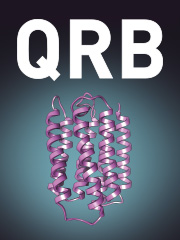Article contents
Two-photon fluorescence excitation and related techniques in biological microscopy
Published online by Cambridge University Press: 15 February 2006
Abstract
1. Introduction 98
2. Historical background of two-photon effects 99
2.1 2PE 100
2.2 Harmonic generation 100
2.3 Fluorescence correlation spectroscopy 100
3. Basic principles of two-photon excitation of fluorescent molecules and implications for microscopy and spectroscopy 101
3.1 General considerations 101
3.2 Fluorescence intensity under the 2PE condition 103
3.3 Optical consequences of 2PE 104
3.4 Saturation effects in 2PE 108
3.5 Fluorescence correlation spectroscopy 109
3.5.1 Autocorrelation analysis 110
3.5.2 Photon-counting histogram analysis 112
4. Two-photon-excited probes 115
5. Design considerations for a 2PE fluorescence microscope 119
5.1 General aspects 119
5.2 Descanned and non-descanned 2PE imaging 121
5.3 Lens objectives and pulse broadening 122
5.4 Laser sources 125
5.5 Example of a practical realization 127
6. Applications 134
6.1 Biological applications of 2PE 134
6.1.1 Brain images 134
6.1.2 Applications on the kidney 139
6.1.3 Mammalian embryos 139
6.1.4 Applications to immuno-response 141
6.1.5 Myocytes 141
6.1.6 Retina 142
6.1.7 DNA imaging 143
6.1.8 FISH applications 144
6.2 2PE imaging of single molecules 144
6.3 FCS applications 148
6.4 Signals from nonlinear interactions 151
7. Conclusions 153
8. Acknowledgements 154
9. References 155
This review is concerned with two-photon excited fluorescence microscopy (2PE) and related techniques, which are probably the most important advance in optical microscopy of biological specimens since the introduction of confocal imaging. The advent of 2PE on the scene allowed the design and performance of many unimaginable biological studies from the single cell to the tissue level, and even to whole animals, at a resolution ranging from the classical hundreds of nanometres to the single molecule size. Moreover, 2PE enabled long-term imaging of in vivo biological specimens, image generation from deeper tissue depth, and higher signal-to-noise images compared to wide-field and confocal schemes. However, due to the fact that up to this time 2PE can only be considered to be in its infancy, the advantages over other techniques are still being evaluated. Here, after a brief historical introduction, we focus on the basic principles of 2PE including fluorescence correlation spectroscopy. The major advantages and drawbacks of 2PE-based experimental approaches are discussed and compared to the conventional single-photon excitation cases. In particular we deal with the fluorescence brightness of most used dyes and proteins under 2PE conditions, on the optical consequences of 2PE, and the saturation effects in 2PE that mostly limit the fluorescence output. A complete section is devoted to the discussion of 2PE of fluorescent probes. We then offer a description of the central experimental issues, namely: choice of microscope objectives, two-photon excitable dyes and fluorescent proteins, choice of laser sources, and effect of the optics on 2PE sensitivity. An inevitably partial, but vast, overview of the applications and a large and up-to-date bibliography terminate the review. As a conclusive comment, we believe that 2PE and related techniques can be considered as a mainstay of the modern biophysical research milieu and a bright perspective in optical microscopy.
Information
- Type
- Research Article
- Information
- Copyright
- 2006 Cambridge University Press
- 253
- Cited by

